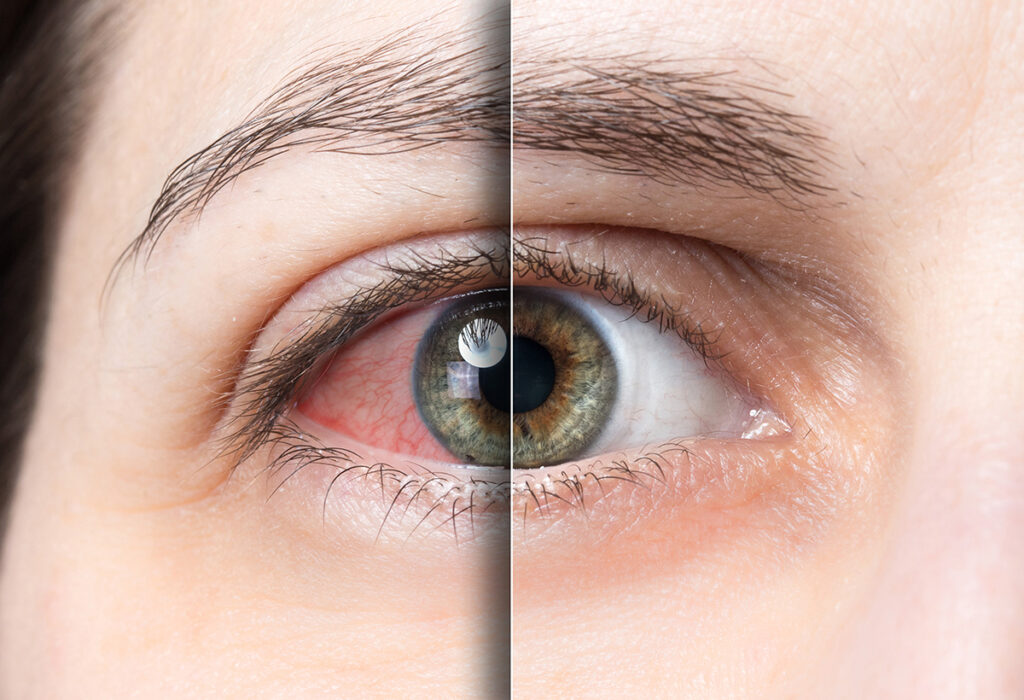What is Dry Eye?
Dry eye is a condition where your eyes don’t produce enough tears or the tears evaporate too quickly. This leads to dryness, irritation, redness, and sometimes blurry vision. It can be caused by aging, screen time, medical conditions, or environmental factors.

Understanding About Dry Eye
Dry eye, or dry eye disease (DED), is a common condition caused by an imbalance in the tear film that covers the surface of the eye. This imbalance can lead to irritation, discomfort, and even vision disturbances.
Dry eye can result from various factors, including eye health, anatomical issues, and overall systemic conditions. Proper evaluation of symptoms is important for early diagnosis and effective treatment, which can significantly enhance a patient’s quality of life.
The tear film is made up of three layers—lipid, aqueous, and mucin—each playing a vital role in keeping the eyes moist, protected, and healthy. Understanding these layers is key to managing dry eye effectively.
Why Do Our Eyes Need Moisture?
Our eyes need a healthy tear film to stay smooth, comfortable, and work properly. Tears are made of three layers:
Oil (outer layer) – prevents evaporation
Water (middle layer) – provides moisture
Mucin/protein (inner layer) – helps tears spread evenly
When the quality or quantity of these layers is off, it leads to Dry Eye Syndrome.
Common Causes of Dry Eye
Dry eye can be triggered by many environmental, lifestyle, and medical factors. Some of the most common include:
Air Conditioning: AC reduces humidity, speeding up tear evaporation. Long-term exposure can damage tear glands and reduce tear quality.
Screen Time: Staring at screens (computer or mobile) reduces blink rate, affecting tear distribution.
Aging & Menopause: Hormonal changes, especially in women, can reduce tear production.
Health Conditions: Diabetes, thyroid problems, Vitamin A deficiency, Sjögren’s syndrome, rheumatoid arthritis, etc.
Medications: Antihistamines and other drugs can decrease tear production.
Eye Surgery: LASIK or other surgeries may cause temporary dry eyes.
Environmental Pollution: People in heavily polluted cities like Delhi, Mumbai, or Chennai are more prone to dry eyes.
Eyelid Issues: Incomplete eyelid closure can prevent proper tear coverage.
Tears also have antimicrobial properties. Without enough tears, the eyes are more vulnerable to infections, inflammation, and even vision loss.
Symptoms of Dry Eye Disease
Burning or stinging
Grittiness or foreign body sensation
Itching or aching eyes
Feeling of heaviness
Redness and watering
Blurred vision
Slower reading speed
Tips & Treatments to Prevent Dry Eye Symptoms
Adjust AC Settings: Keep the temperature at 23°C or above and avoid direct airflow to the eyes.
Increase Room Humidity: Place a bowl of water in air-conditioned rooms to retain moisture.
Stay Hydrated: Drink plenty of fluids throughout the day.
Blink More Often: Especially during screen use.
Limit Screen Time: Take regular breaks using the 20-20-20 rule (every 20 minutes, look 20 feet away for 20 seconds).
Get Enough Sleep: 7–8 hours of quality sleep helps eye health.
Wear Sunglasses: Protect your eyes from wind, dust, and sunlight.
Advanced Treatment Options:
Preservative-free artificial tears – Gentler on the eyes and safe for frequent use.
Punctal plugs (reversible) – Tiny devices inserted into tear ducts to retain natural tears.
Night-time eye ointments or moisture goggles – Help keep eyes hydrated during sleep.
Meibomian gland therapy – Devices that heat and express oil glands to improve tear quality.
Intense Pulsed Light (IPL) therapy – Reduces inflammation and improves meibomian gland function.
Topical anti-inflammatory medications – Includes corticosteroids, cyclosporine, or lifitegrast to reduce eye surface inflammation.
Oral antibiotics – Macrolides or tetracyclines can improve gland function and reduce inflammation.
Further Treatment Options for Severe or Chronic Dry Eye:
Autologous serum eye drops – Made from the patient’s own blood, rich in growth factors for healing.
Oral or topical secretagogues – Medications that stimulate natural tear production.
Therapeutic contact lenses – Special lenses that protect the eye and retain moisture.
Amniotic membrane grafts – Promote healing of the eye surface in severe cases.
Surgical punctal occlusion – Permanent closure of tear ducts to prevent tear drainage.
Tarsorrhaphy – A surgical procedure that partially closes the eyelids to reduce tear evaporation.
FAQs – Dry Eye Treatment at American Laser Eye Hospitals, Hyderabad
Dry eye disease (DED) is a condition where your eyes don’t produce enough quality tears, or the tears evaporate too quickly. This leads to dryness, irritation, redness, and sometimes blurred vision.
Dry eyes can be caused by air conditioning, long screen time, aging (especially menopause), certain medications, autoimmune diseases like Sjögren’s syndrome, pollution, and reduced blink rate.
Common symptoms include burning, itching, dryness, gritty feeling, eye fatigue, blurred vision, and excessive tearing.
If untreated, severe dry eyes can lead to corneal damage, ulcers, and even permanent vision problems. Early diagnosis and treatment are key to preventing complications.
Our specialists use advanced diagnostic tools to assess your tear film, tear production, and eye surface health to accurately diagnose dry eye and its severity.
Treatments include preservative-free eye drops, punctal plugs, night-time ointments, meibomian gland therapy, anti-inflammatory eye drops, and lifestyle modifications. Severe cases may need serum eye drops or surgical options.
We offer the latest diagnostic tools, personalized treatment plans, and advanced technologies to effectively manage dry eyes. Our experienced team ensures safe, result-driven care in a patient-friendly environment.
